Full text
PDF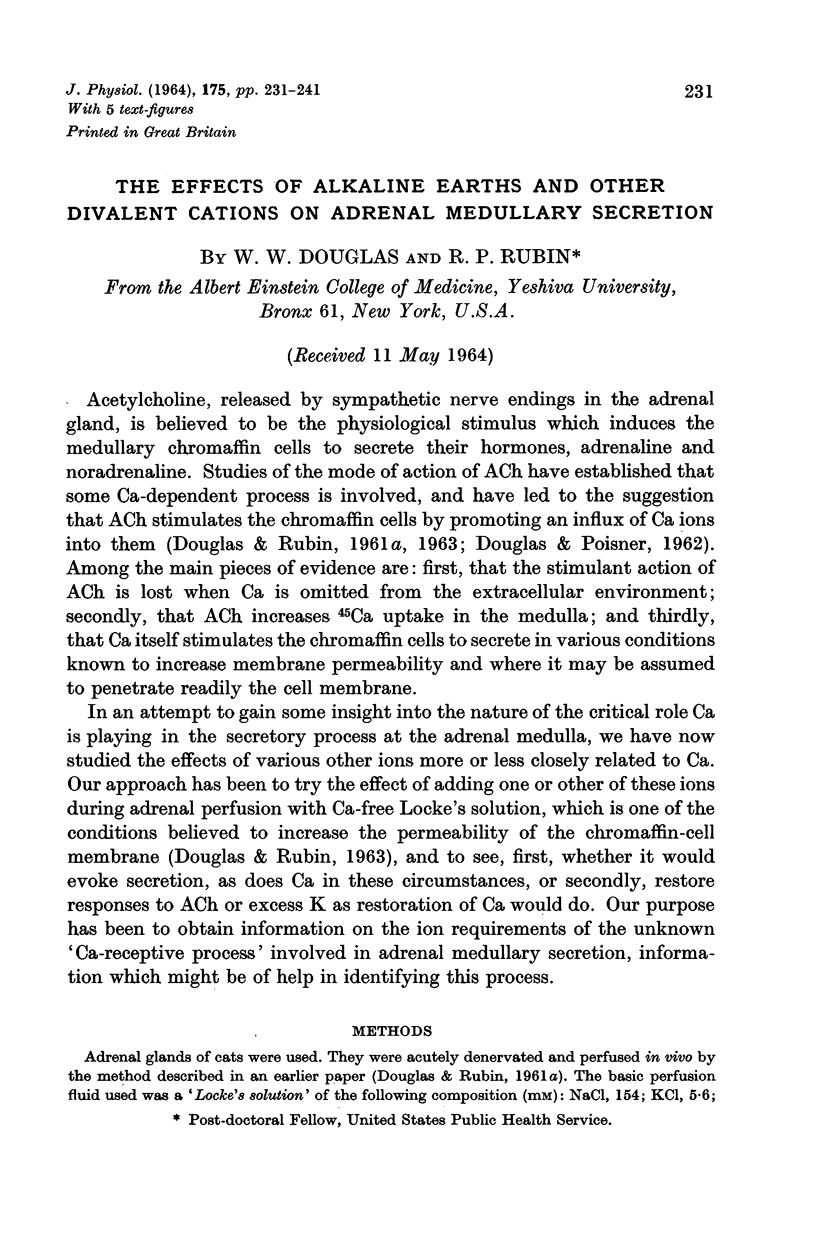
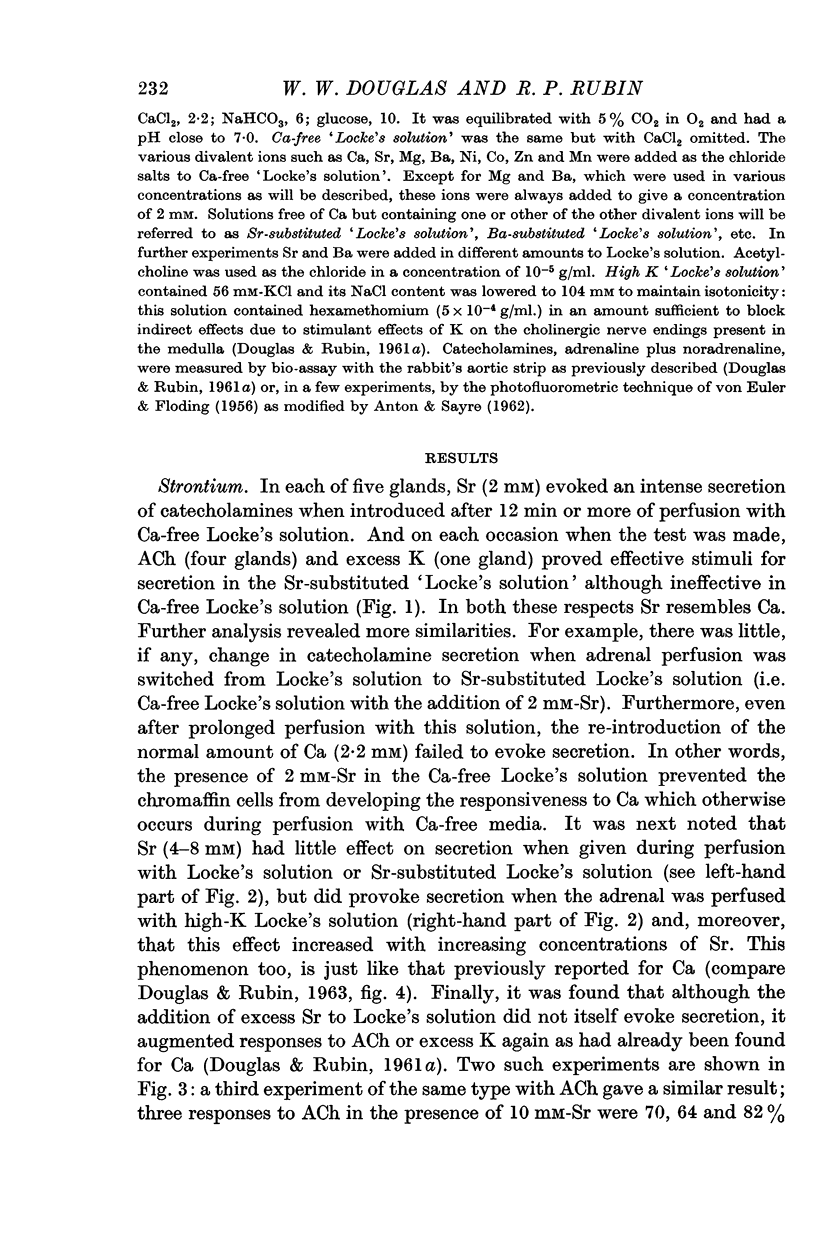
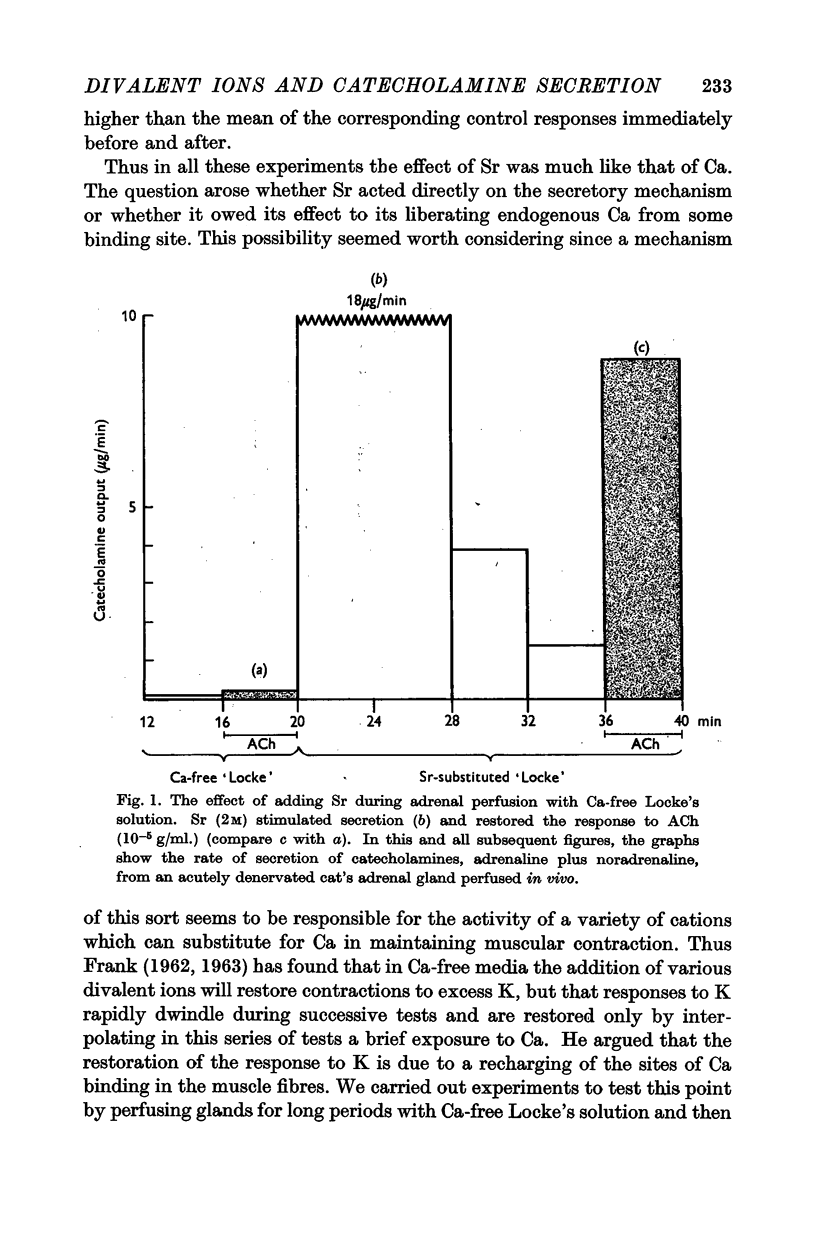
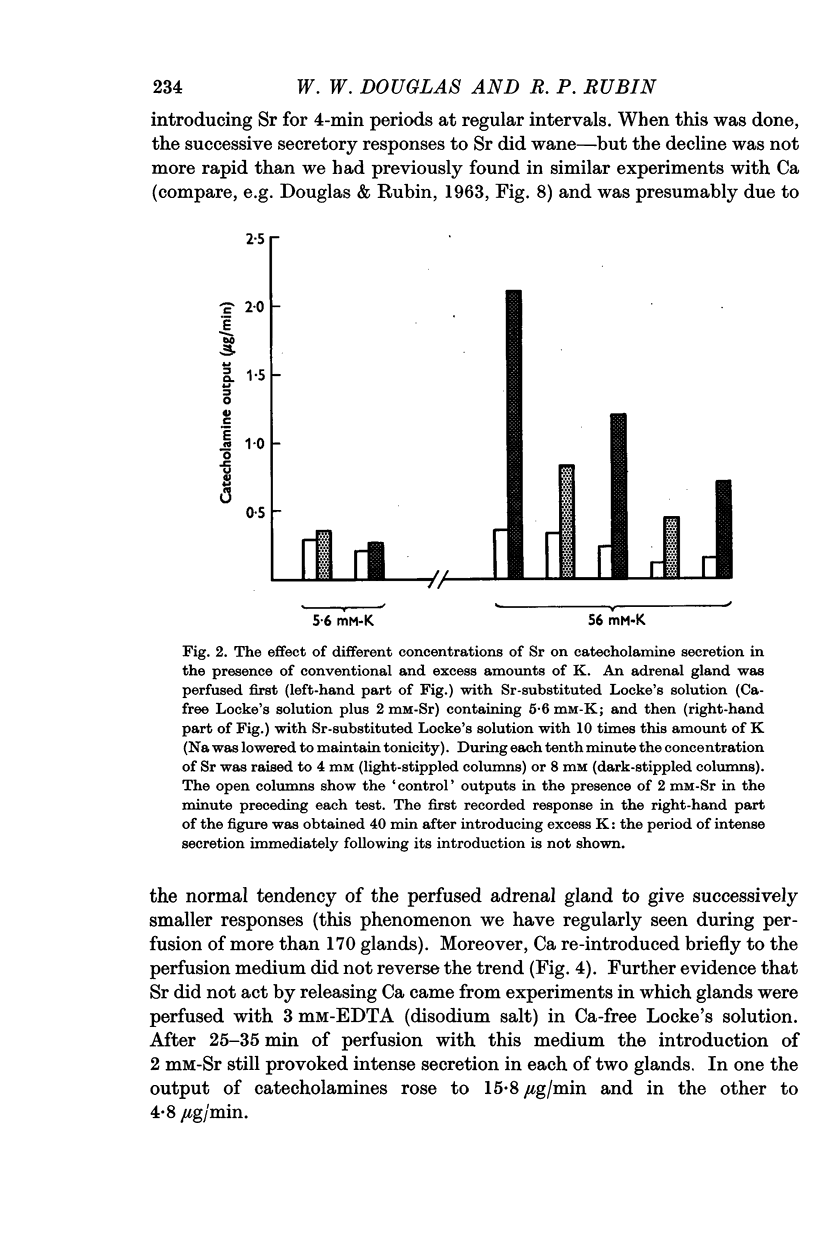
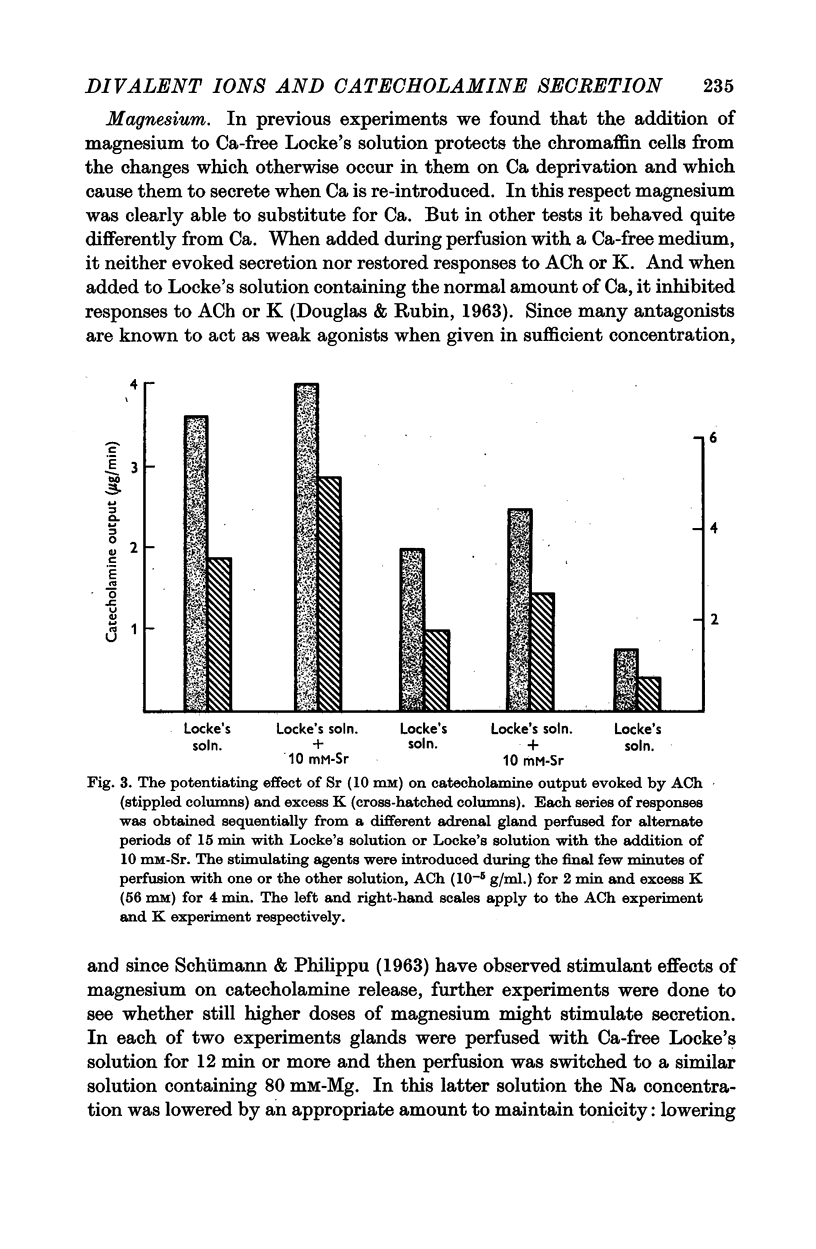
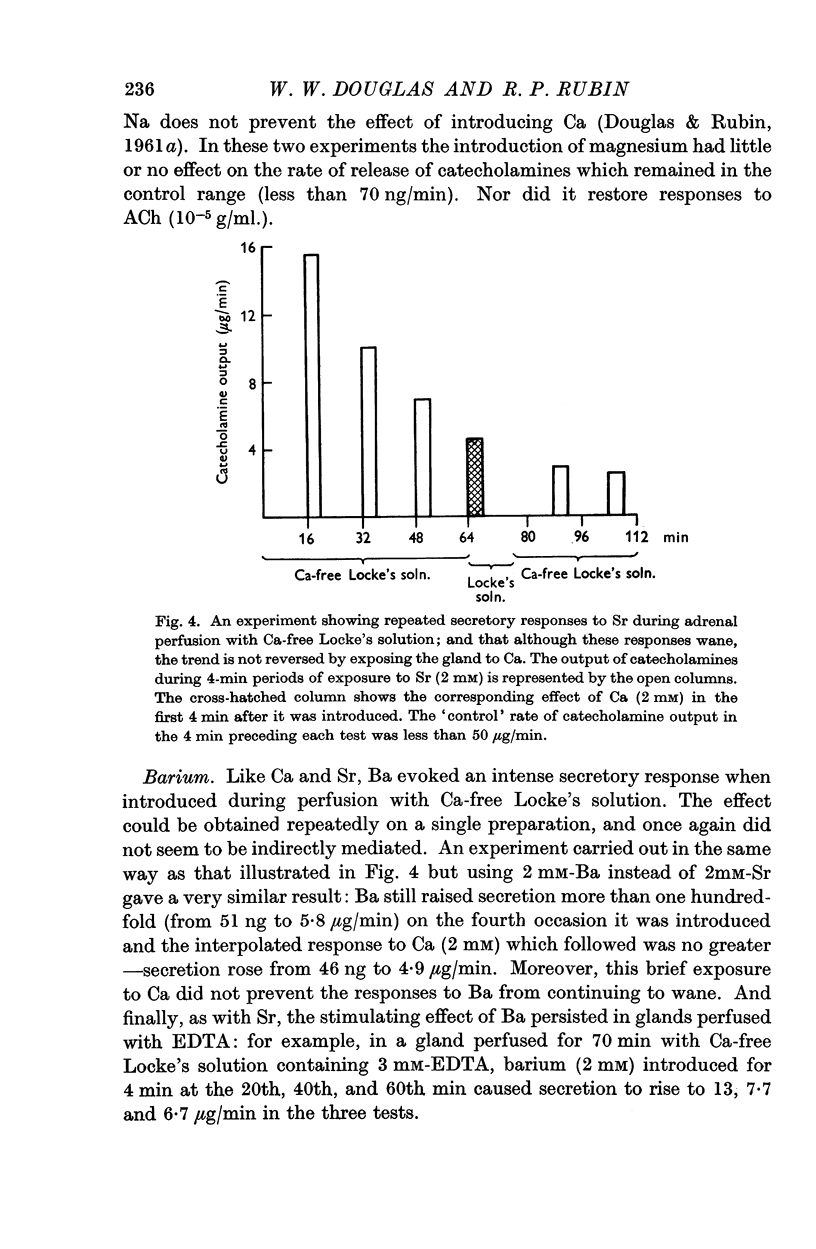
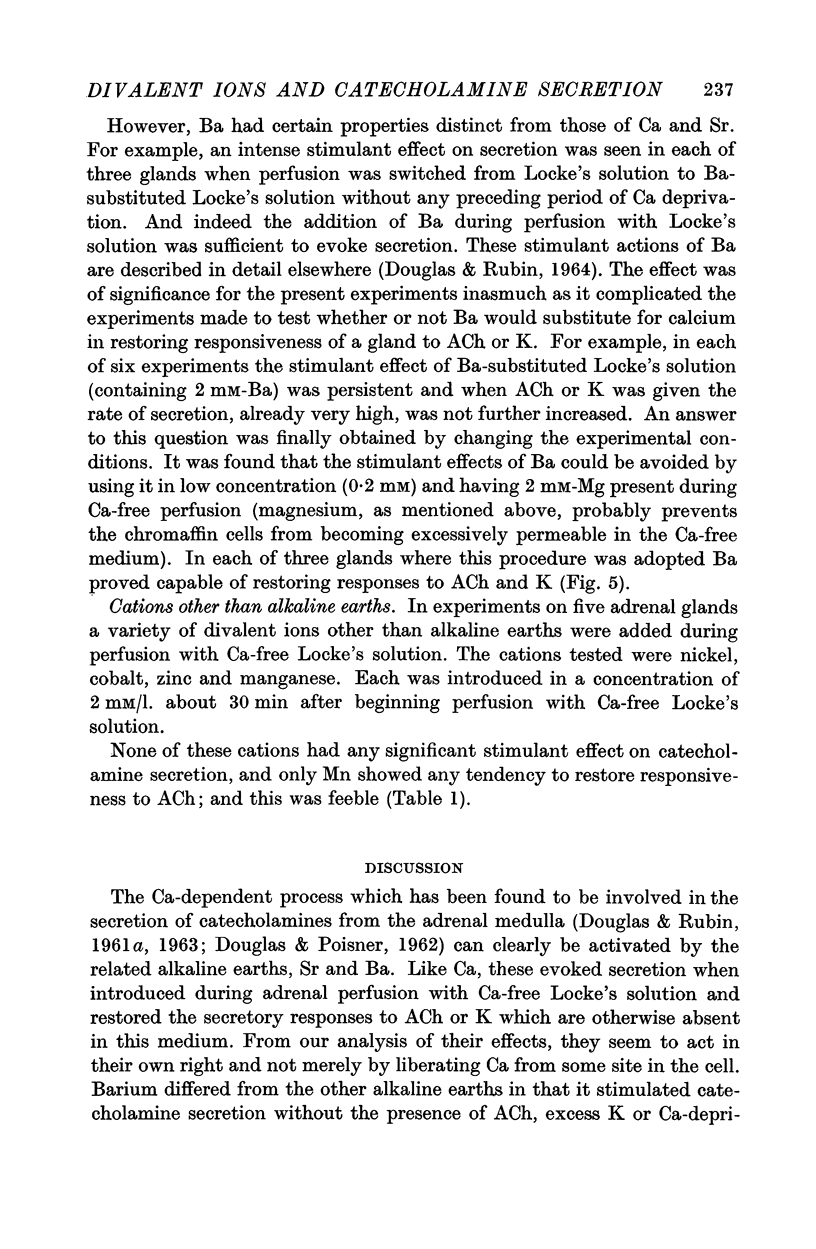
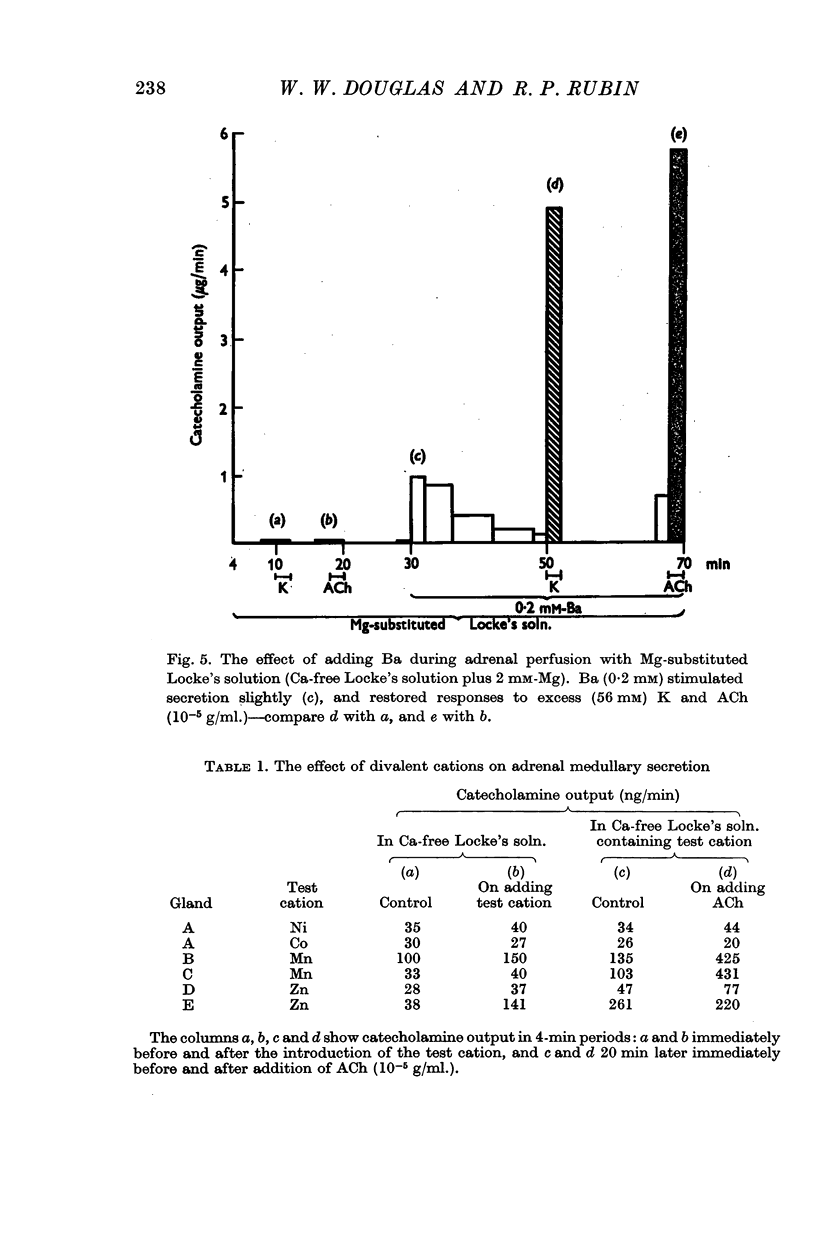
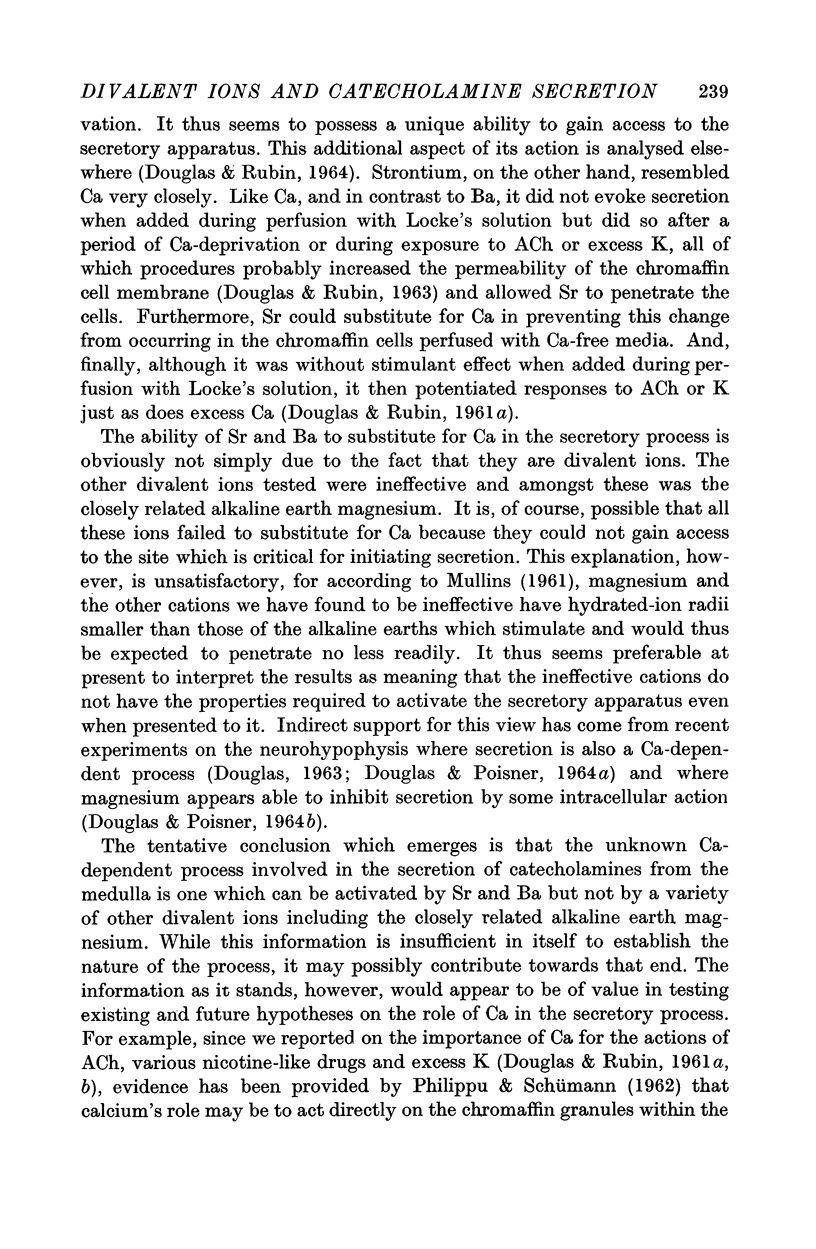
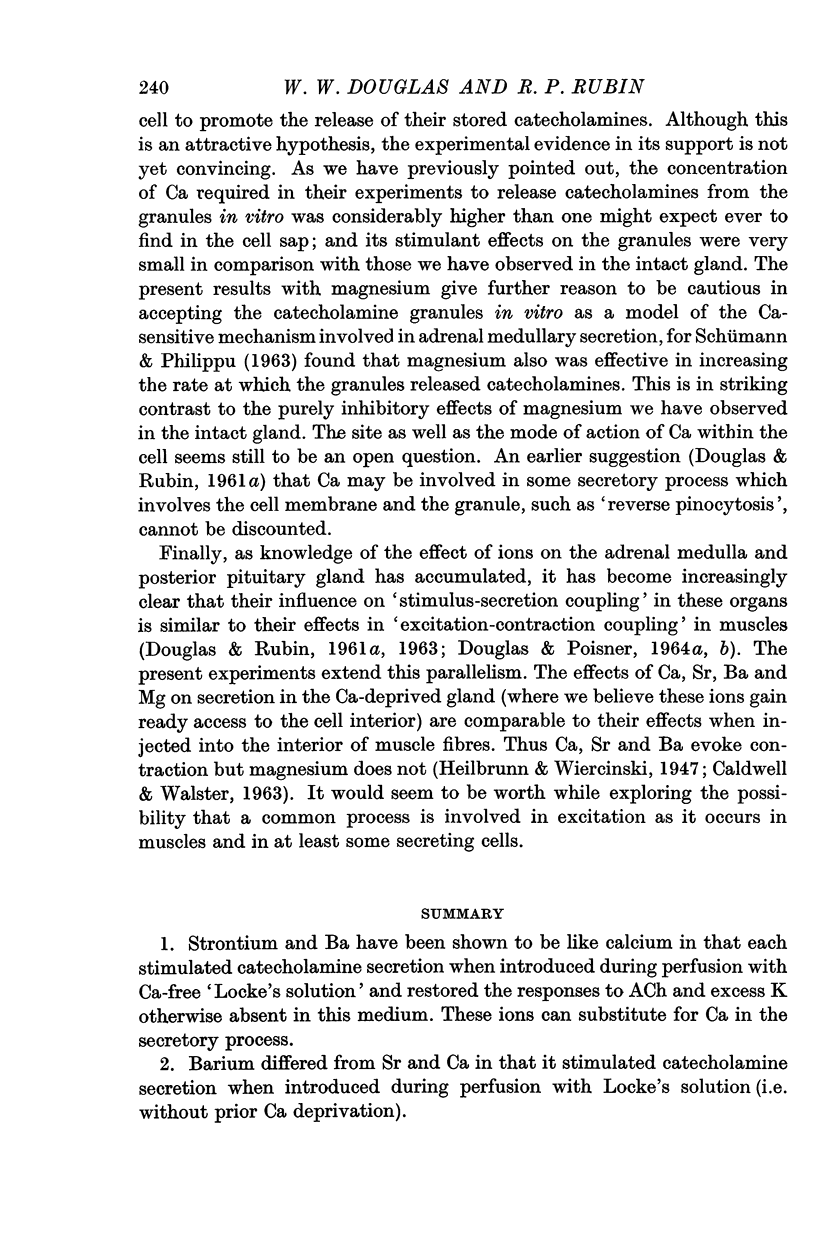
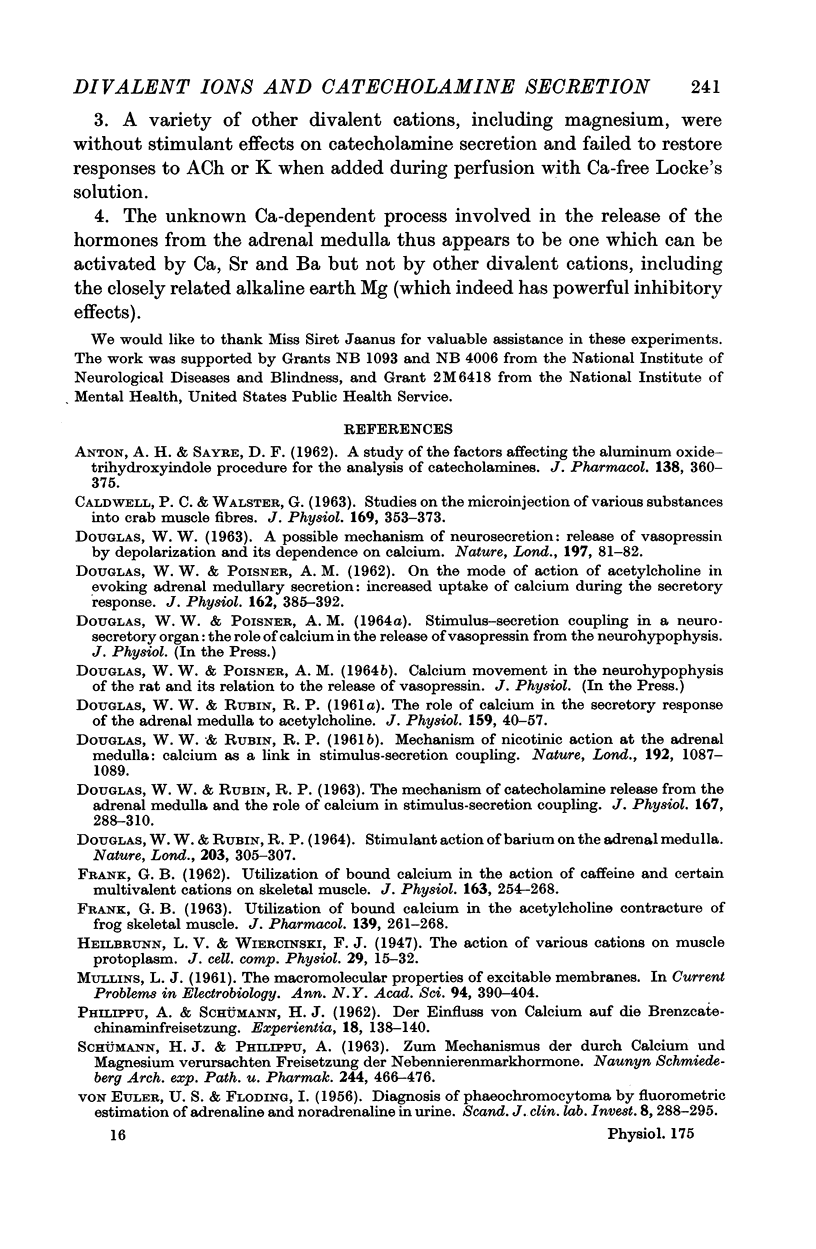
Selected References
These references are in PubMed. This may not be the complete list of references from this article.
- ANTON A. H., SAYRE D. F. A study of the factors affecting the aluminum oxide-trihydroxyindole procedure for the analysis of catecholamines. J Pharmacol Exp Ther. 1962 Dec;138:360–375. [PubMed] [Google Scholar]
- CALDWELL P. C., WALSTER G. STUDIES ON THE MICRO-INJECTION OF VARIOUS SUBSTANCES INTO CRAB MUSCLE FIBRES. J Physiol. 1963 Nov;169:353–372. doi: 10.1113/jphysiol.1963.sp007261. [DOI] [PMC free article] [PubMed] [Google Scholar]
- DOUGLAS W. W., POISNER A. M. On the mode of action of acetylcholine in evoking adrenal medullary secretion: increased uptake of calcium during the secretory response. J Physiol. 1962 Aug;162:385–392. doi: 10.1113/jphysiol.1962.sp006940. [DOI] [PMC free article] [PubMed] [Google Scholar]
- DOUGLAS W. W., RUBIN R. P. Mechanism of nicotinic action at the adrenal medulla: calcium as a link in stimulus-secretion coupling. Nature. 1961 Dec 16;192:1087–1089. doi: 10.1038/1921087b0. [DOI] [PubMed] [Google Scholar]
- DOUGLAS W. W., RUBIN R. P. STIMULANT ACTION OF BARIUM ON THE ADRENAL MEDULLA. Nature. 1964 Jul 18;203:305–307. doi: 10.1038/203305a0. [DOI] [PubMed] [Google Scholar]
- DOUGLAS W. W., RUBIN R. P. The role of calcium in the secretory response of the adrenal medulla to acetylcholine. J Physiol. 1961 Nov;159:40–57. doi: 10.1113/jphysiol.1961.sp006791. [DOI] [PMC free article] [PubMed] [Google Scholar]
- Douglas W. W., Rubin R. P. The mechanism of catecholamine release from the adrenal medulla and the role of calcium in stimulus-secretion coupling. J Physiol. 1963 Jul;167(2):288–310. doi: 10.1113/jphysiol.1963.sp007150. [DOI] [PMC free article] [PubMed] [Google Scholar]
- FLODING I., VON EULER U. S. Diagnosis of pheochromocytoma by fluorimetric estimation of adrenaline and noradrenaline in urine. Scand J Clin Lab Invest. 1956;8(4):288–295. doi: 10.3109/00365515609049286. [DOI] [PubMed] [Google Scholar]
- FRANK G. B. Utilization of bound calcium in the acetylcholine contracture of frog skeletal muscle. J Pharmacol Exp Ther. 1963 Mar;139:261–268. [PubMed] [Google Scholar]
- FRANK G. B. Utilization of bound calcium in the action of caffeine and certain multivalent cations on skeletal muscle. J Physiol. 1962 Sep;163:254–268. doi: 10.1113/jphysiol.1962.sp006972. [DOI] [PMC free article] [PubMed] [Google Scholar]
- MULLINS L. J. The macromolecular properties of excitable membranes. Ann N Y Acad Sci. 1961 Sep 6;94:390–404. doi: 10.1111/j.1749-6632.1961.tb35553.x. [DOI] [PubMed] [Google Scholar]
- PHILIPPU A., SCHUEMANN H. J. [The influence of calcium on catecholamine liberation]. Experientia. 1962 Mar 15;18:138–140. doi: 10.1007/BF02153862. [DOI] [PubMed] [Google Scholar]
- SCHUEMANN H. J., PHILIPPU A. [On the mechanism of release of adrenal medulla hormones induced by calcium and magnesium]. Naunyn Schmiedebergs Arch Exp Pathol Pharmakol. 1963;244:466–476. [PubMed] [Google Scholar]
- SHAMOS M. H., LAVINE L. S., SHAMOS M. I. Piezoelectric effect in bone. Nature. 1963 Jan 5;197:81–81. doi: 10.1038/197081a0. [DOI] [PubMed] [Google Scholar]


